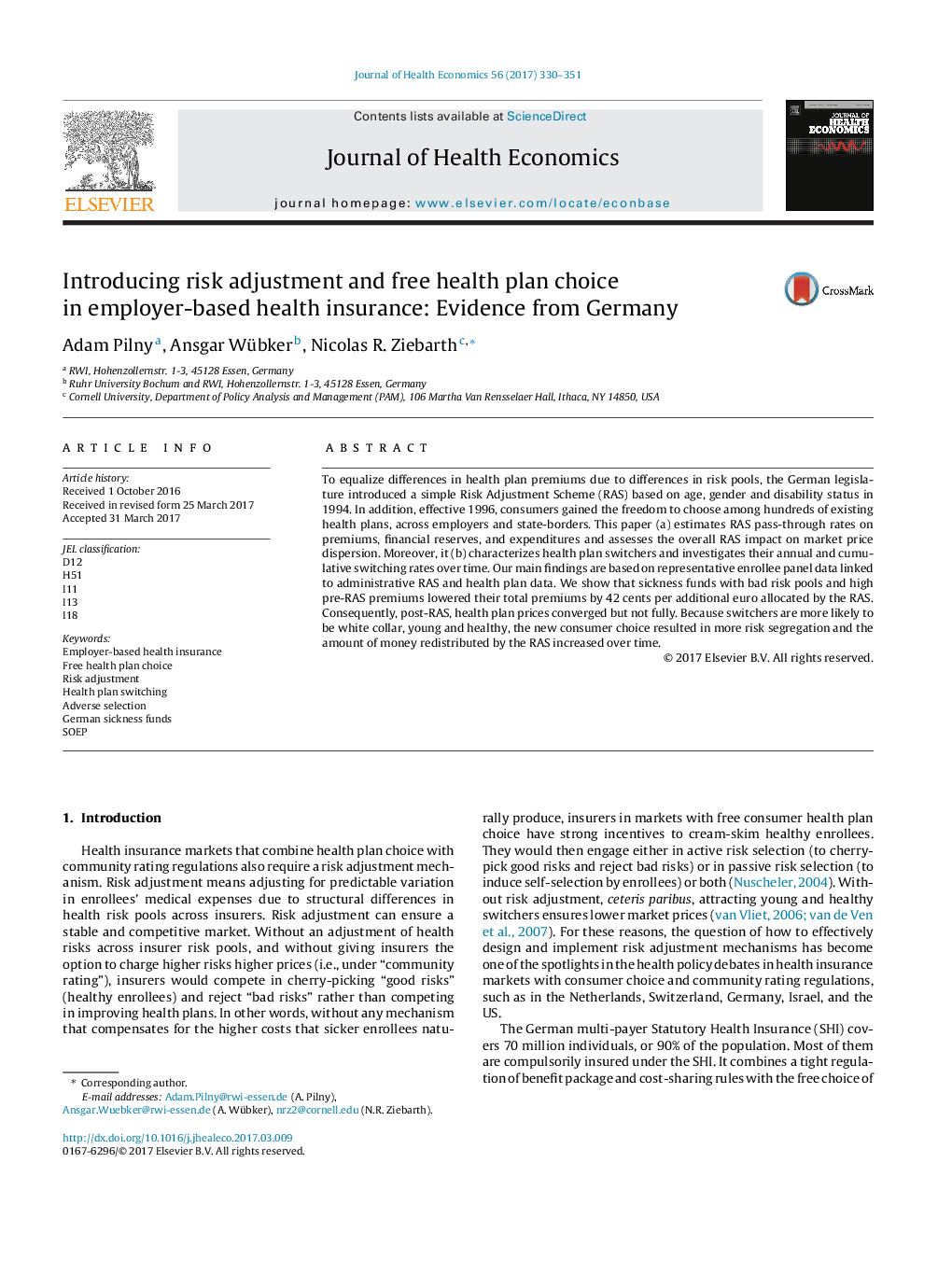| Article ID | Journal | Published Year | Pages | File Type |
|---|---|---|---|---|
| 7363020 | Journal of Health Economics | 2017 | 22 Pages |
Abstract
To equalize differences in health plan premiums due to differences in risk pools, the German legislature introduced a simple Risk Adjustment Scheme (RAS) based on age, gender and disability status in 1994. In addition, effective 1996, consumers gained the freedom to choose among hundreds of existing health plans, across employers and state-borders. This paper (a) estimates RAS pass-through rates on premiums, financial reserves, and expenditures and assesses the overall RAS impact on market price dispersion. Moreover, it (b) characterizes health plan switchers and investigates their annual and cumulative switching rates over time. Our main findings are based on representative enrollee panel data linked to administrative RAS and health plan data. We show that sickness funds with bad risk pools and high pre-RAS premiums lowered their total premiums by 42 cents per additional euro allocated by the RAS. Consequently, post-RAS, health plan prices converged but not fully. Because switchers are more likely to be white collar, young and healthy, the new consumer choice resulted in more risk segregation and the amount of money redistributed by the RAS increased over time.
Related Topics
Health Sciences
Medicine and Dentistry
Public Health and Health Policy
Authors
Adam Pilny, Ansgar Wübker, Nicolas R. Ziebarth,
